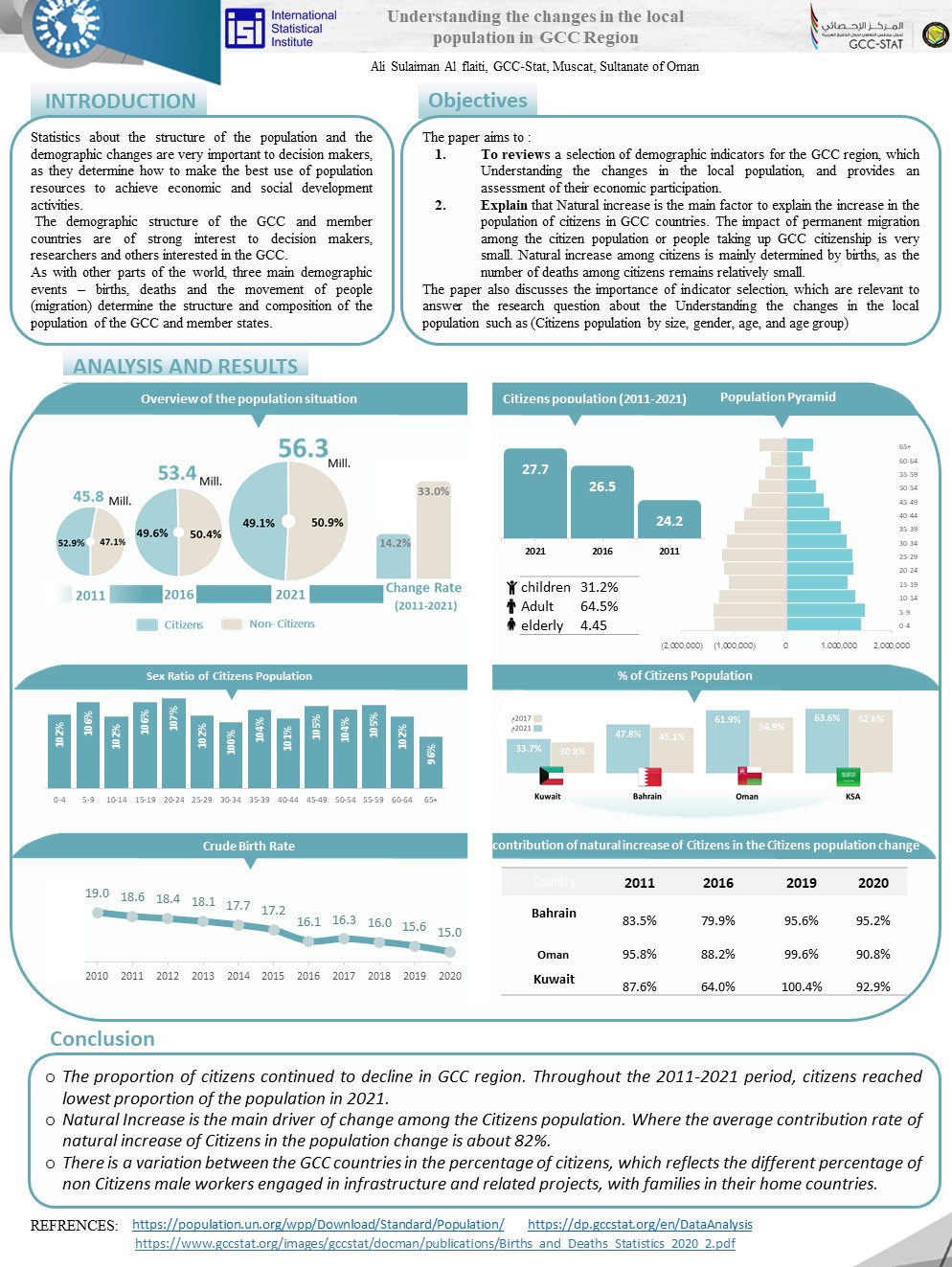Demographics of the GCC – Understanding the changes in the local population.
Conference
64th ISI World Statistics Congress - Ottawa, Canada
Format: CPS Poster
Session: CPS Posters-09
Wednesday 19 July 2 p.m. - 3:20 p.m. (Canada/Eastern)
Abstract
Demographics of the GCC – Understanding the changes in the local population.
(Short)
The countries in the GCC (United Arab Emirates, Bahrain, Saudi Arabia, Oman, Qatar, and Kuwait), are recognized for their high levels of economic development, which have helped in the transformation of their societies and economies. At the same time, the demographics of the local populations have also been undergoing significant changes. All countries in the GCC have young local populations (over 50% of local populations are under 25 years of age), while the proportion of older citizens is low. Some countries have less than 6% of locals over the age of 65 years of age. However, fertility and marriage rates are declining. This is associated with high levels of tertiary education participation for both men and women. In all of the GCC countries, female participation in the labor force is increasing. This paper will describe the current demographic situation of the local populations in the GCC countries and discuss some of the longer-term implications of these structural changes.
Demographics of the GCC – Understanding the changes in the local population.
The countries in the GCC (United Arab Emirates, Bahrain, Saudi Arabia, Oman, Qatar, and Kuwait) together make up the Gulf Cooperation Council (GCC) region. These countries have had high levels of economic development, fueled by high oil and gas prices throughout the last decade.
Economic development has transformed societies and economies. At the same time, the population has undergone significant change. The total population of the GCC region nearly doubled over 20 years, increasing from 26.2 million in 1995 to 56.4 million in 2021. While the large component of this growth in population is the large external migration to help support economic and social development, there have also been significant changes in the local populations. In this context, the local population refers to people with citizenship in the GCC countries.
Over the 2010-2021 period, some of the GCC countries saw increases in their local populations of over 19 percent. All countries in the GCC have young local populations. In 2021, over 50% of the local population was under 25 years of age ), while the proportion of older citizens is low. In 2021, some countries had approximately 5% of locals over the age of 65 years of age.
The impact of the young population is starting to impact the labor market, with increasing numbers of young locals entering the labor force.
However, there are clear signs that this pattern of a very young population is changing. Fertility and marriage rates are declining. Fertility rates in some countries have declined. Marriage rates, especially among women are declining, with associated increases in the age of first marriage.
Changes in the demographic profile of the GCC local population have had less focus in the literature. However, the implications of these changes are already starting to impact societies.
Figures/Tables
Understanding the changes in the local population

